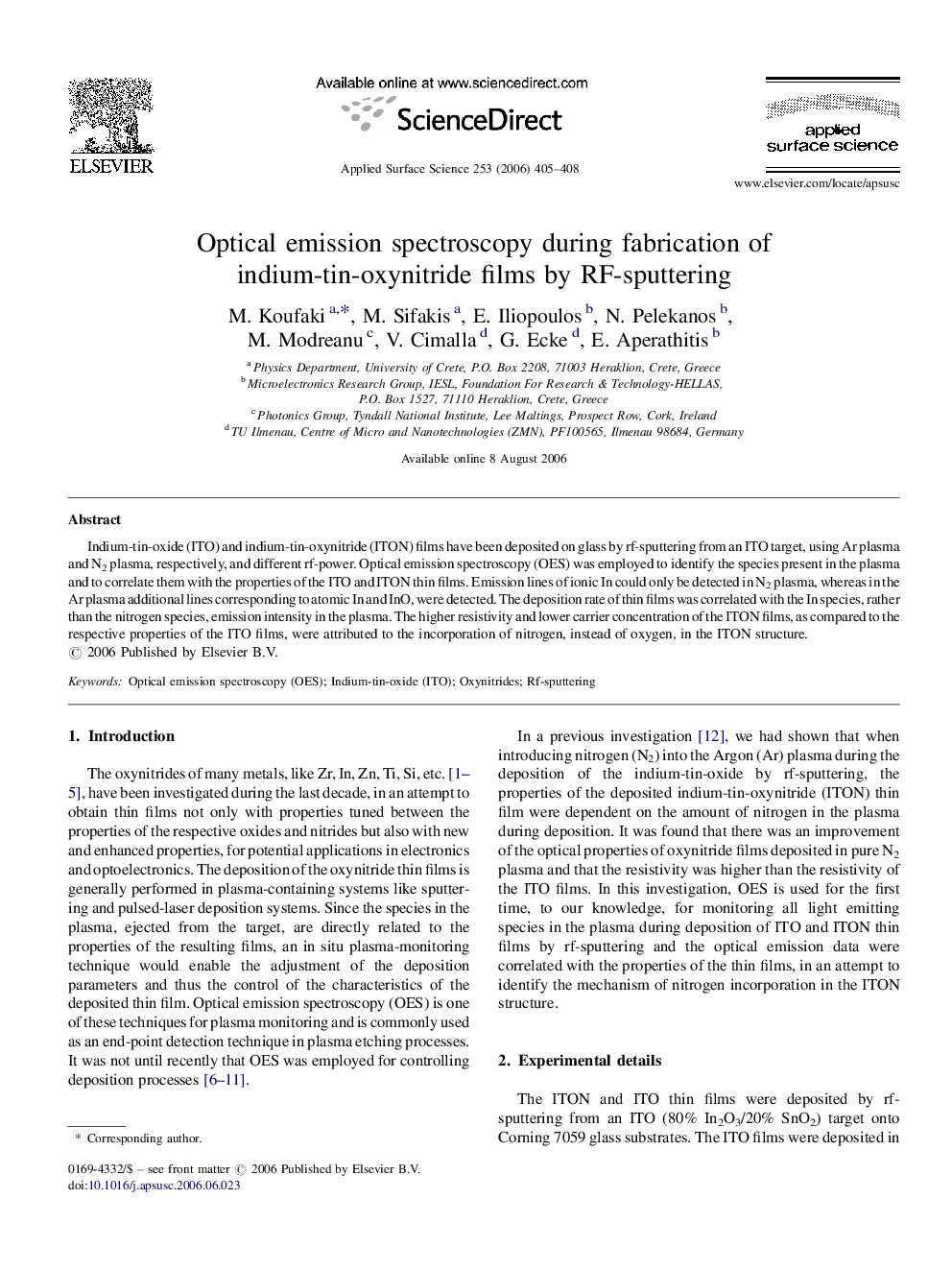| Article ID | Journal | Published Year | Pages | File Type |
|---|---|---|---|---|
| 5368592 | Applied Surface Science | 2006 | 4 Pages |
Abstract
Indium-tin-oxide (ITO) and indium-tin-oxynitride (ITON) films have been deposited on glass by rf-sputtering from an ITO target, using Ar plasma and N2 plasma, respectively, and different rf-power. Optical emission spectroscopy (OES) was employed to identify the species present in the plasma and to correlate them with the properties of the ITO and ITON thin films. Emission lines of ionic In could only be detected in N2 plasma, whereas in the Ar plasma additional lines corresponding to atomic In and InO, were detected. The deposition rate of thin films was correlated with the In species, rather than the nitrogen species, emission intensity in the plasma. The higher resistivity and lower carrier concentration of the ITON films, as compared to the respective properties of the ITO films, were attributed to the incorporation of nitrogen, instead of oxygen, in the ITON structure.
Related Topics
Physical Sciences and Engineering
Chemistry
Physical and Theoretical Chemistry
Authors
M. Koufaki, M. Sifakis, E. Iliopoulos, N. Pelekanos, M. Modreanu, V. Cimalla, G. Ecke, E. Aperathitis,
